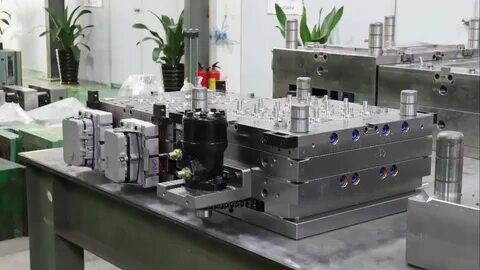Plastic injection molding is one of the most widely used manufacturing techniques in the production of plastic parts. This process involves injecting molten plastic into a mold to produce high-precision, high-quality parts in large quantities. While this technique is used worldwide, China has become a hub for plastic injection molding due to its cost-effectiveness, high production capacity, and advanced technology. In this article, we'll explore why plastic injection molding in China is considered the most cost-effective manufacturing solution for businesses worldwide.

China's expertise in plastic injection molding is well-established, with manufacturers possessing the latest machinery and technology. The use of advanced injection molding machines ensures the production of high-precision parts with minimal defects, ultimately reducing rework costs and ensuring superior product quality.
Chinese manufacturers excel in providing quick turnaround times for plastic injection molding projects. With access to highly skilled workers, efficient processes, and well-organized production lines, businesses can expect faster production times, resulting in quicker time-to-market for products.
Unprecedented Production Efficiency
In scenarios involving mass production, plastic injection molding works very well, allowing producers to produce thousands of similar components quickly and reliably. Depending on the part's complexity, the technique enables quick manufacturing cycles, usually lasting between 15 and 120 seconds each cycle. With this speed, the entire production output is increased and labor expenses are greatly decreased. In addition to further reducing operating costs and boosting productivity, modern injection molding machines can function with little assistance from humans.
Material Versatility and Minimal Waste
The remarkable material flexibility of injection molding is among its most alluring benefits. There are hundreds of plastic materials available to manufacturers, such as elastomers, thermosets, and thermoplastics, each with special qualities to meet certain product needs. Many sophisticated systems that can recycle and reuse extra plastic are made possible by the accuracy of the injection molding process, which guarantees little material waste. It is a cost-effective and ecologically responsible production technique because of the immediate cost reductions that result from this material efficiency.
Low per-unit Manufacturing Costs
In plastic injection molding, the cost per unit drops significantly as manufacturing quantities rise. Significantly lower production costs per piece offset the original mold design expenditure. Injection molding makes it simple to build complex geometries that would be costly or impossible to create using other production techniques.
Superior Design Flexibility and Precision
With the unparalleled design flexibility provided by contemporary injection molding technology, manufacturers can produce complex, accurate parts with exacting tolerances. Engineers may improve mold designs before production using sophisticated computer-aided design (CAD) and simulation technologies, which minimizes costly revisions and reduces mistakes. The method offers manufacturers unmatched creative and practical possibilities by supporting intricate elements like internal structures, numerous colors, and integrated components.
Long-Term Cost Effectiveness and Durability
Long-term cost reductions are a result of the outstanding uniformity and durability of injection-molded components. Injection-molded polymers' consistent molecular structure guarantees long product lifespans, excellent strength, and wear resistance. With the assurance that the initial investment will result in dependable, high-performance parts, manufacturers can depend on these components for crucial applications in the consumer electronics, automotive, medical, and industrial sectors.
Final Words
The pinnacle in cost-effective production, plastic injection molding in China combines economic efficiency with technological innovation. This approach stands out as a game-changing choice as businesses continue to seek accuracy, scalability, and affordability. Combining CNC machining services with injection molding for complete production requirements can offer a comprehensive strategy for creating inventive, high-quality products.
Real-World Examples of Cost-Effective Plastic Injection Molding in China
Many companies across the world have turned to Chinese manufacturers for their plastic injection molding needs due to the cost savings and high-quality production. For example, [Company Name], a leading supplier of consumer electronics, partnered with a Chinese plastic injection molding manufacturer to produce over 5 million plastic parts annually. This collaboration allowed the company to cut production costs by 30% while improving the overall quality and precision of their components.
Moreover, a recent study by the [Industry Research Group] found that over 40% of global plastic injection molding companies are now outsourcing production to China, largely due to the combination of low labor costs and advanced manufacturing technologies.
FAQs
What is the average lifespan of an injection molding tool?
Around 100,000 and 1 million pieces can be produced by a high-quality injection mold before needing extensive repair or maintenance.
What elements affect injection molding costs?
The component design, production volume, material selection, mold complexity, and necessary tolerances mostly determine the cost of manufacturing.
Is it possible to employ injection molding for small manufacturing runs?
Small to medium production runs are becoming more feasible and cost-effective because of current processes, however, they are still most cost-effective for large volumes.
How do 3D printing and injection molding compare in terms of manufacturing?
Compared to 3D printing, injection molding provides better speed, material qualities, and cost per unit for high production quantities.